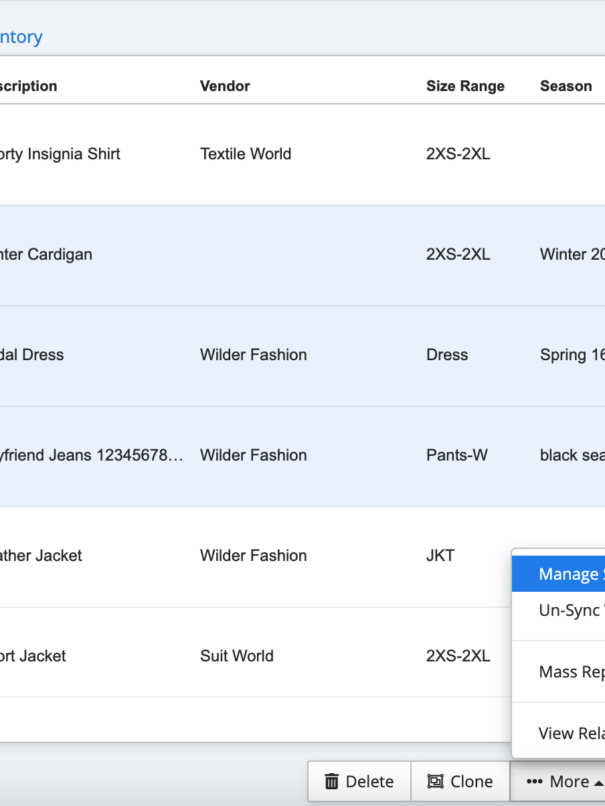Today’s retail store owners are aware of the advantages emerging technologies offer and use them to create shopping experiences that will appeal to modern consumers.
From retail inventory solutions to augmented reality, technology in retail is reshaping retail shops and empowering consumers to make quick and informed buying decisions, while at the same time helping retailers to reduce their overhead and improve planning, providing them with a competitive edge to grow in the market.
In this post, we’re discussing six technologies you should consider including in your retail operation and explaining how they can improve your business.

Photo by A65 Design on Unsplash
How to Use Technology in Retail Businesses?
Here are six instances of new technology that retailers are proactively integrating into their stores in order to give customers the best user experience and achieve their business objectives.
1. Mobile Shopping
Over 86 million people in the US use their smartphones to shop online, and four out of five phone users thoroughly examine the goods and services offered online before making a purchase.
Since smartphones are becoming the standard platform for brand interaction and online purchases, it is essential for retailers to maintain a positive online image. To drive business growth, business owners and marketers must work to make customers’ mobile purchasing experiences entertaining, educational, and convenient.
2. Behavioral Analytics
Customer behavioral analytics and web analytics are growing more significant as mobile users grow more accustomed to online buying. Customers prefer to explore products and services online, but they anticipate that online retailers will provide them with a variety of options based on their tastes and purchasing patterns. Retailers can improve their supply chain, merchandising, marketing, and other strategic business decisions by utilizing the rich data on customer behavior patterns provided by online business analytics.
Online marketers can benefit greatly from behavioral analytics, which keeps track of customers’ past search and buying activity as well as their interactions with customer service representatives. Thanks to this data, retailers can predict and recommend the appropriate goods and services to their target audience.
3. Retail Inventory Solutions
Efficiently managing inventory is essential for all retail organizations. Inventory management software is a system for tracking retail inventory levels, orders, transactions, and conveyances. It is a tool for organizing stock information that was previously primarily stored in printed copy structures or bookkeeping sheets.
By using retail inventory management software, retail stores can save money by preventing both product shortages and overstocks, and reach balance in their stock levels. As a result, they are able to keep more money in their pockets, which they can use to fund the development of profitable businesses. Inventory software can also make keeping track of your stock in many locations much simpler if you have several distribution centers or locations where an item is kept.
4. Cloud-Based ERP
An enterprise resource planning system has every feature that is included in retail inventory software, but that is where the similarities end. An ERP’s feature set is far more comprehensive than that of standard inventory software. It is intended for large organizations, asit is also significantly more costly and less flexible.
When you keep track of your inventory using a cloud-based ERP system, you can compare inventory data with billing schedules, purchase orders, financial data, and other useful analytics. You can make decisions based on data because up-to-date, reliable data is always within grasp at every point of the selling, buying, and managing processes.
5. Mobile POS
The days of large registers are over; now, it’s simple to upgrade your retail business with mobile POS systems which can be added anywhere in your store.
Given that 34% of millennial shoppers rarely or never carry cash, mobile POS caters to the preferences of today’s customers while also expediting in-store operations. Mobile POS enhances the consumer experience at the checkout counter by decreasing waiting times. Sales associates can start processing transactions while customers are still in line, allowing them to check out quickly and conveniently.
6. Augmented Reality
Retailers with physical locations have started to use augmented reality to create engaging customer experiences. This is a wise move, given that more than 60% of customers like establishments with augmented reality experiences. Additionally, it has been demonstrated that AR encourages impulsive purchasing, with over 70% of consumers reporting that AR has led them to make unplanned purchases of goods.
In the modern retail environment, augmented reality can make it simple for customers to see a product they are thinking about purchasing, no matter if it’s a new dining room table or a pair of boots. Consumers tend to frequent shops that use AR to enhance the shopping experience more and lengthen the time they spend interacting with a particular product.

Photo by Kitti Incédi on Unsplash
3 Examples of Technology in Fashion Retail Stores
Augmented reality window displays – Zara
Zara temporarily incorporated augmented reality technology into their stores in 2018 through external window displays and designated in-store AR zones. Customers in a few Zara stores were instructed to stand in a particular spot on the shop floor and use their phone as a lens when held up to a sensor. Then, models started to appear wearing items from the most recent collection and interacting with their surroundings.
This allowed customers to have a better idea of how the clothing fit and could be styled without having to use the changing rooms if they were pressed for time.
Speed shop – Nike
A flagship Nike store called the “Nike House of Innovation 000” debuted in NYC in 2018 and featured digital components to give customers an immersive and extremely practical shopping experience. The six-floor studio’s “Speed Shop” is a standout feature, along with customization studios and quick checkout areas.
Customers are now able to reserve shoes online to try on in-store. To be more specific, they can come through a designated entry, find a locker with their name on it, and unlock it using their smartphone. Customers do not even need to stand in line or speak to anyone in order to purchase the shoes in question because mobile check-out is also an option.
Social retail store – Burberry
Burberry’s first social retail store opened in Shenzhen, China’s innovation hub, in July 2020 with the intention of combining the area’s passion for luxury retail with social media to offer an interactive and immersive shopping experience.
Users accumulate virtual social currency by engaging with a customized mini-program within the WeChat app (learning more about specific products, scheduling appointments, and sharing user-generated content). This virtual currency is then utilized to hatch and gradually evolve an animal character on the shopper’s mobile device as they go around the retail store – a fun way to gamify the shopping experience and reward customers for their involvement.
The Bottom Line
While it does take some time for some technological advancements to enter the everyday operations of businesses, the truth is there are many emerging technologies that are already having a positive impact on many retail companies, such as mobile shopping, retail inventory solutions, and augmented reality.
Of course, utilizing technology alone does not ensure a retailer’s success. For instance, a store may employ technology to manage and control product flow, but if it keeps inventory that customers don’t want, it will lose money. Therefore, retailers should strive to develop a combination of technological expertise, solid retail management strategies, problem-solving progress and interpersonal skills, in order to see growth.







